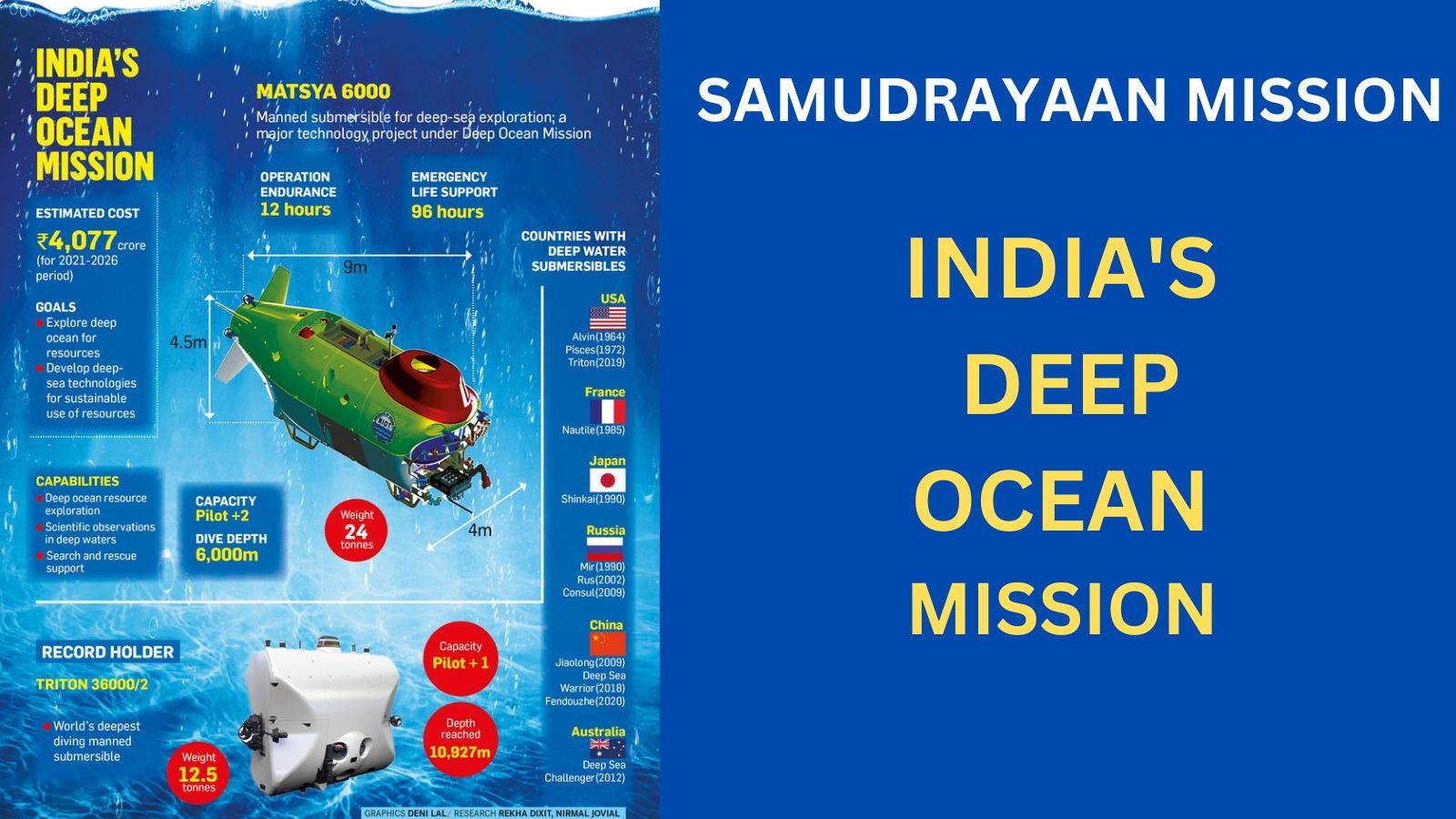24 Dec Samudrayaan Mission
What is Samudrayaan Mission? The Aim of the Mission
The talks about how the Samudrayaan Mission affects Indian Science and Technology which is related to daily current affairs for UPSC.
Relevance for prelims: Quick facts about prelims, Government policies and interventions
Relevance for mains: GS-3.
In News: The Samudrayaan Mission is anticipated to be realized by the year 2026, according to the Ministry of Earth Science.
About Samudrayaan Mission
- In order to explore deep-sea resources including minerals, the project will send three people in a vehicle named the “MATSYA 6000” to a depth of 6000 metres.
- The National Institute of Ocean Technology (NIOT), Chennai, a division of the Ministry of Earth Sciences, is creating the “MATSYA 6000” vehicle.
- It can last 12 hours in regular operation and 96 hours in an emergency to protect people.
- The Rs 6000-crore Deep Ocean Voyage includes this first-of-its-kind manned ocean mission for India.
- The creation of Ti Alloy Personnel Spheres, Human Support and Safety Systems in Enclosed Space, Low-Density Buoyancy Modules, Ballast and Trim systems, and Low-Density Buoyancy Modules are a few of the essential parts of manned submersibles.
- Indian Space Research Organization (ISRO), IITM, and the Defence Research and Development Organization (DRDO) will all take a significant part in this project.
- India will join an exclusive group of countries that include the US, Russia, Japan, France, and China in having specialized equipment and vehicles for subsea operations.
- Cost: The Deep Ocean Mission (DOM) has a five-year, $4,077 crore total budget approved by the Centre.

Samudrayaan Mission
Significance
- There are nine coastal states and 1,382 islands along India’s 7517 kilometres of coastline, which is in a unique marine position.
- With the oceans on three of its sides and around 30% of the people living along the shore, the coastal regions are important for India’s economy.
- The manned submersible will enable research experts to directly examine and comprehend uncharted deep-sea regions.
- It will also strengthen the central government’s plan for a “New India,” which includes the blue economy as one of the top ten growth drivers.
- It promotes aquaculture, tourism, subsistence, and blue trade.
Deep Ocean Mission (DOM)
- The Ministry of Earth Sciences approved it in June 2021. Its objectives include resource exploration in the deep ocean, deep-sea technology development for ocean resource exploitation that is sustainable, and assistance for the Indian government’s Blue Economy Initiatives.
- The Mission will be carried out over a five-year period at an estimated cost of Rs. 4,077 crores, and it will be done in stages.
- DOM is a mission-mode project that supports the Indian government’s initiatives for the blue economy.
- Earlier, the draught Blue Economy Policy had also been released by the Ministry of Earth Sciences.
- The sustainable use of ocean resources is known as the “blue economy,” and it aims to enhance livelihoods, create more jobs, and maintain the health of the ocean’s environment.
Source:
Download the PDF now:
Daily Current Affairs for UPSC
The important factor of the UPSC examination is enhancing general knowledge. If any IAS aspirant would like to increase their general knowledge, he/she should have to read current affairs free of cost.
So, Collect and read the best daily current affairs for the UPSC examination from Plutus IAS. Also, read the weekly, and monthly current affairs from us.



No Comments